We sincerely hope that each of you, our readers, will greatly enjoy and appreciate this article we present about these 5 Magnificent Mammals of Oregon. It was certainly our great pleasure to gather the information for you. May it provide you with both education and increased awareness.
Certainly, these few amazing species listed herein represent only a tiny portion of the similar marvels found in this area. It’s our belief, though, that they serve as excellent representations of the many wonders that exist. Check out some of our many other articles for similar marvels.
Striped Skunk
Striped Skunk Facts
- Leading off this article about these 5 Magnificent Mammals of Oregon we present you with the unfairly infamous marvel named the Striped Skunk.
- This beautiful small mammal with the unfortunate reputation most frequently goes by the common name given to it herein. It does have a few other generally used monikers, though. Those include the distinctive tags common skunk, northern skunk, and prairie polecat.
- Within the scientific community, however, it’s perhaps more frequently referred to by its technical title. That, thankfully remains a relatively comparatively name for the layperson to pronounce. That’s true since the animal bears the official moniker of the Mephitis mephitis.
- The creature received that distinctive formal title due to the efforts of the German naturalist, Johann Christian Daniel von Schreber. The respected researcher accomplished the first recognition of it as a separate and distinct species. He achieved that noteworthy feat in 1776.
- Regardless of which appellation one chooses to employ, the marvel remains one of the most easily recognizable animals in its native range. It’s even become immersed deep in the local culture, appearing as a character in various cartoons. A total of 13 subspecies also exist.
- Fortunately, the remarkable Striped Skunk seems to be maintaining a sizeable and stable population base. That pleasant trend further appears to hold true throughout the entirety of its habitat zone. The IUCN, therefore, now lists it as Least Concern on its published Red List.
- The intriguing creature nevertheless faces some very real potential threats to its continued existence as a species. In this, it finds itself in the same situation as most species on the earth today. It’s endangered by the dual perils posed by habitat loss and ongoing climate change.
Striped Skunk Physical Description
The remarkable Striped Skunk never fails to present the viewer with a captivating appearance. It fully deserves appreciation for the beauty Nature gifted it with. Yet, it’s not an overly large animal, in terms of pure physical size. Nature, however, blessed the mammal with many other attributes.
Like many of earth’s fauna, the beautiful animal usually presents a certain degree of the physiological characteristic of sexual dimorphism. In its case, this trait manifests itself in terms of sheer physical measurements. Due to that tendency, the males attain a larger size than females.
That difference remains relatively minor, though. As a general principle, the males grow to about 10% larger than their female counterparts. This includes both weight and length of body. Exceptional individuals do naturally occur, however, completely regardless of their gender.
Overall, individuals attain an average head-to-tail length measuring somewhere between 20.5 – 30.3 in (52 – 77 cm). Body mass also varies accordingly. Specimens therefore typically display weights ranging from 4 – 9.9 lb (1.8 – 4.5 kg). Some of them do reach as much as 12 lb (5.5 kg), though.
The body of the Striped Skunk is perhaps best described as stout in form. It’s limbs develop as relatively short, while it also evolved a small, conical head. The thickly-furred tail typically accounts for about half the overall length. The front feet have long claws, but the rear one’s are shorter.
Yet its the eye-catching color pattern of the animal that grabs the eye first. The precise nature of this varies widely between individuals, but a basic pattern remains. That generally consists of a deep black background, with the well-known white stripe extending from nose to the tip of its tail.
- Kingdom: Animalia
- Phylum: Chordata
- Class: Mammalia
- Order: Carnivora
- Family: Mephitidae
- Genus: Mephitis
- Species: M. mephitis
Striped Skunk Distribution, Habitat, and Ecology
The beautiful Striped Skunk evolved as endemic to a comparatively wide expanse of the surface of our beautiful world. That precise region of the globe doesn’t surprise many people, however. That’s because the mammal developed as endemic to much of what’s presently known as North America.
The majority of its natural zone of habitation includes the entirety of the continental United States. To the north, though, the mammal appears in the approximate southern half of the country of Canada. Southward, the oft-maligned animal lives in a very small part of northern Mexico.
Nature blessed this natural marvel with an impressive adaptability in terms of its habitat choices. Due to that remarkable degree of flexibility, it appears in a wide range of ecosystems. These include such highly diverse regions as rocky outcrops, wooded ravines, and moderately brushy corners.
It does, however, show a moderate preference for areas of mixed woodlands. Its adaptability never ceases to amaze the viewer, though. As a result of human presence, in some regions, such as the state of Illinois, a few populations actually prefer cultivated areas over uncultivated one’s.
It’s the defensive tactics of the Striped Skunk that undoubtedly gather the most attention, though. Two glands near the base of the tail produce an extraordinarily odorous liquid. The animal has the ability to spray this at will for a respectable distance. Due to the strength of this, it has few predators.
It also evolved as principally carnivorous in terms of diet. The animal mostly feeds on various insects, such as grasshoppers, crickets, beetles, and caterpillars. Yet, it sometimes eats eggs, voles, mice, as well as fish and small reptiles. Various fruit, such as berries, also form an occasional treat.
Northern Flying Squirrel
Northern Flying Squirrel Facts
- Next up in this compilation of 5 Magnificent Mammals of Oregon comes the befuddling beauty deceptively named the Northern Flying Squirrel.
- This small mammal most frequently goes by this somewhat informative common name throughout its native territory. The natual wonder also represents one of only three living members of its genus, Glaucomys, to make its home in what’s now known as the New World.
- The intriguing creature does have another name by which it’s known, though. That’s because, like all species, it also holds a purely technical designation. Fortunately, this one’s relatively simple to pronounce, as such things go. It’s formally named the Glaucomys sabrinus.
- The animal received that unique moniker due to the efforts of the respected English zoologist and botanist, George Kearsley Shaw. He accomplished the first official recognition of it as a separate and distinct species. This scientifically noteworthy action occured in 1801.
- The surprising animal also remains noteworthy for another, astonishing fact. That’s due to the fact that researchers presently recognize a total of 24 subspecies of this small marvel of Nature! This fact alone distinguishes the marvel of Nature from the other members of its Order.
- For the moment, the Northern Flying Squirrel appears to be maintaining a population base that’s both sizable and stable. This fact also seems to hold true throughout the entirety of its known range. The IUCN, therefore, now lists it as Least Concern on its published Red List.
- The remarkable animal nevertheless does face some potential threats to its continued existence as a species. These, however, consist of the same one’s that most species presently face. These include habitat degradation and outright loss, and, of course, climate change.
Northern Flying Squirrel Physical Description
The remarkable Northern Flying Squirrel easily impresses those fortunate to encounter one. It does so, however, for reasons other than sheer size. Although it’s certainly a lovely animal, it’s not just its appearance that distinguishes it. That’s state exists due to other special characteristics.
Unlike many animals around the world, yet in keeping with the pattern established by other squirrels, this creature displays no noticeable degree of sexual dimorphism. Distinguishing the genders of specific individuals encountered therefore remains quite difficult for the casual observer.
In terms of physical size, though, it ranks as somewhat smaller than many of its multiple genetic cousins. Individuals attain an average overall length measuring 9.8 – 14.6 in (25 – 37 cm). That, however, includes the tail as well. This part of the body often comprises roughly half its length.
The body of the appealing rodent develops as quite slim and elongated. The majority of specimens reach an average body weight of only 2.6 – 4.9 oz (75 – 140 gms). Exceptional specimens occur, of course. Even these, though, rarely exceed these measurements by more than a small fraction.
It also displays several very specific adaptations useful for its lifestyle. These include having relatively large, black eyes. It also has the ability to rotate its hind feet, allowing it to climb down trees head first. Its fleshy membrane, however, easily remains its most noticeable physical feature.
In coloring, the fabulous Northern Flying Squirrel presents a pattern of various shades of light brown on the upper body. Yet, it also presents as gray on the flanks of its body. The underside, though, typically manifests a whitish shade. Its tail develops as fluffy, yet somewhat flattened.
- Kingdom: Animalia
- Phylum: Chordata
- Class: Mammalia
- Order: Rodentia
- Family: Sciuridae
- Genus: Glaucomys
- Species: G. sabrinus
Northern Flying Squirrel Distribution, Habitat, and Ecology
The fantastic Northern Flying Squirrel evolved as indigenous to a part of the globe already well known for its abundance of wildlife. That’s due to the fact that the amazing rodent lives on the continent of North America. There, though, its population remains somewhat disjointed in nature.
As its name implies, the great majority of its numbers appear in the northern part of the continent. More specifically, most of its population lives in the nation of Canada. It also appears as far north as the state of Alaska, though. The small wonder of Nature also appears in the United States.
In that country, it’s population’s scattered, though. To the west, it’s seen in California and Colorado. From there, it’s also observed to the northeast in Ohio, Wisconsin, and Michigan. In the east, the animal also lives in regions of Tennessee and North Carolina, in the Appalachian Mountains.
In each of these entirely separate regions, however, it displays identical habitat preferences. Populations most often appear in areas dominated by conifers. Some do, though, make their homes in regions of deciduous or mixed forests. It also prefers dense concentrations of trees, as well.
The wondrous Northern Flying Squirrel evolved as a mainly nocturnal animal. It’s also primarily arboreal in nature. On the ground, it’s relatively clumsy. Among the trees, though, it glides from limb to limb gracefully. Its main predators include hawks, owls, martens, and coyotes, among others.
Its diet remains typical of its kind. As a herbivore, it consumes a wide variety of locally available food. This fare typically includes such staples as various nuts, fungi, acorns, lichens, fruits, buds, and even tree sap. It does, however, occasionally supplement this with insects and even bird eggs.
Cougar
Cougar Facts
- The third entry into this gathering of these 5 Magnficent Mammals of Oregon is the only feline among them, the breathtaking Cougar.
- The short term we’re using serves as but one of the common names assigned to this magnificent wild feline. It does have numerous others, though. These include mountain lion, puma, painter, panther, and catamount. The variety of names occur due to its wide range.
- Inside of scientific circles, however, it’s better known by its technical appellation. Thankfully, that’s one that’s actually surprisingly simple for the layperson to pronounce. That’s true given the fact that the marvel of Nature and evolution holds the formal tag of Puma concolor.
- It received that moniker due to the efforts of the esteemed Swedish zoologist, Carl Linnaeus. That renowned researcher accomplished the first acknowledged recognition of it as a separate and distinct species. He achieved that feat in 1771. The name he chose later changed.
- Regardless of which of these one chooses to employ, it stands out in the minds of many scientists for several reasons. Though not technically one of the so-called big cats, it’s the fourth largest of all known wild felines. It’s also the most widespread of any in its Hemisphere.
- Though its population numbers don’t compare to where they stood in the past, the Cougar nonetheless appears to be maintaining a measure of stability. That pleasant fact also seems to hold true across its range. The IUCN therefore currently lists it as Least Concern.
- It nevertheless still faces numerous potential threats to its continued existence as a species. Like most forms of life remaining on earth today, most of these perils stem from the actions of mankind. They include the related dangers of habitat loss and ongoing climate change.
Cougar Physical Description
The breathtaking Cougar immediately grabs the attention of virtually everyone who encounters the impressive creature. Unlike some animals, though, this occurs due to a variety of reasons. That’s because it typically mesmerizes viewers with both its sheer beauty and surprising measurements.
In both regards, it follows the pattern common among many mammals, including felines. That’s due to the fact that it displays a certain degree of the physiological characteristic of sexual dimorphism. Where this wildcat’s concerned, however, that trait manifests itself in terms of sheer size.
Again mimicking its many relatives, males of the species attain slightly greater statistics. That holds true in all categories. It must nevertheless be pointed out that, even within the same gender, mature adults vary significantly in each of these, due to a combination of factors, such as environment.
In general, however, it’s in the length that the gender-based difference appears the most readily apparent. Males reach a mean nose-to-tail length equaling approximately 7.9 ft (2.4 m). Females of the creature, however, generally reach an overall length only equaling about 6.7 ft (2.05 m).
Like all cats, it also possesses a long, slender tail. This appendages comprises an average 25 – 37 in (63 -95 cm) of the total length of the animal. It also forms another minor sex-based difference. The tail of males tend to measure on the higher end of this range, compared to the females.
A final example of sexually dismorphic traits appears in the body mass of the feline. The males generally attain a much greater weight than their female counterparts. For him, this usually ranges between 115 – 220 lb (53 – 100 kg). Females, though, typically weigh from 64 – 141 lb (29 – 64 kg).
The Cougar also boasts other impressive statistics, shared equally. Its rounded head displays erect ears. The feline has a jaw and forequarters powerful enough to grasp large prey. It also has five retractable claws on the forepaws, and proportionately the largest hindlegs in the cat family.
Its coloring also merits notice. The fur develops as short and sleek in nature. In coloring, the upper body presents as tan or light brown to reddish-brown. The stomach, though, shows shades of cream or white. Black markings also appear on the tips of the tail and ears, and on the muzzle.
- Kingdom: Animalia
- Phylum: Chordata
- Class: Mammalia
- Order: Carnivora
- Family: Felidae
- Genus: Puma
- Species: P. concolor
Cougar Distribution, Habitat, and Ecology
The fascinating Cougar evolved as endemic to an impressively broad swathe of the earth’s surface. The full extent of that range rarely fails to surprise most who learn of it. That impressively large native zone of habitation actually extends from parts of Canada to the Andes in South America.
The greatest concentration of its population, though, falls within the boundaries of North America. The smaller section of that territory consists of the northwestern part of Canada. Most of its numbers in North America reside in the western third of the United States, with a few exceptions.
Aiding in its continued existence as a species comes the fact that it evolved as a highly adaptable creature. This flexibility allows it to inhabit a wide variety of habitat types within its native range. Most notably, though, these include forests, lowlands, mountains, and arid climates.
Its incredible physique also allows the impressive feline some of the greatest leaping and short-sprint ability of any extant animal. Individuals have the ability to jump as high as 18 ft (5.5 m) in one bound. These cats also evolved the capacity to leap as far as 40-45 ft (12-14 m) horizontally.
But Nature did not simply stop there. This daunting animal also boasts some extremely impressive speeds. The top measured running velocity of the animal ranges between 40-50 mph (64-80 kph). It remains, however, best capable of short, powerful sprints as opposed to long chases.
The remarkable Cougar feeds entirely as a carnivore, like its relations. As a supremely successful generalist predator, the mammal understandably feeds opportunistically. Specimens therefore eat any animal they can manage to catch, from insects to large ungulates in excess of 1,100 lbs (500 kg).
Investigations in Yellowstone National Park showed that elk, followed by mule deer, seem to represent the animal’s primary targets. The mammal even evolved as highly adept at climbing, allowing it to evade canine competitors. Although not strongly associated with water, it does swim.
Snowshoe Hare
Snowshore Hare Facts
- Nnow appearing in this listing of these 5 Magnificent Mammals of Oregon comes the diminutive beauty named the Snowshoe Hare.
- This beautiful small mammal is most frequently referred to by this appealing common name across its range. Yet, it also has several other, alternate names that it’s known by. Though less often used, it’s sometimes called either the showshoe rabbit or else the varying hare.
- Among scientific professionals, however, such as researchers, it’s typically referred to by its formal name. Thankfully for us, that’s a relatively simple term, as such things go. That’s because the delightful animal also bears the technical name of Lepus americanus.
- It received that technical name due to the work of the respected German naturalist, Johann Christian Polycarp Erxleben. That researcher made the first acknowledgement of it as a separate and distinct species. He accomplished this noteworthy deed in the year 1777.
- Regardless of which term one uses to refer to it, though, the wonder remains an intriguing animal. In addition to its sheer visual appeal, it holds a scientific interest in certain circles. In fact, due to aspects of its ecology, it’s a frequent subject of study of biology students.
- Fortunately, for the moment the population of the Snowshoe Hare still appears to be holding steady, and at sufficient numbers. This further seems to hold true throughout the entirety of its territory. The IUCN, therefore, presently lists it as Least Concern on its published Red List.
- The awesome animal nevertheless does presently face several potential threats, at least. Habitat degradation, or outright loss, due to human acttivites poses a possible future threat. Its greatest threat, however, most likely comes from the effects of ongoing climate change.
Snowshoe Hare Physical Description
The remarkable Showshoe Hare easily captivates those individuals fortunate enough to encounter it. The animal does so, however, due more to its pure appearance, than because of physical size. That’s because, like most of its numerous relatives, it remains a comparatively small variety of mammal.
It also displays a small degree of the physiological characteristic of sexual dimorphism. The small leporid further does so in terms of simple size. Once again following the evolutionary pattern common to its kind, the male of the species averages a slightly maller size than the female.
Overall, however, fully mature individuals generally reach a total length that measures between 16. 3 – 20.4 in (41.3 – 51.8 cm). The amazing animal’s tail also develops as relatively short, though. This small appendage, in fact, only contributes about 1.5 – 2.05 in (3.9 – 5.2 cm) to that length.
The hind feet of the creature also develop as extremely long, relative to body length. In this, the mammal stands out even among its kindred. These average between 4.6 – 5.8 in ( 11.7 -14.7 cm) long. Each of these also evolved as comparatively quite broad, forming the source of the name.
Despite the slight difference it size, individuals of the aptly-named Snowshoe Hare appear virtually identical. This trait also extends to the pattern of coloring. In this, too, it stands out from many mammals, though. That’s true since its colors vary significantly, according to the seasons.
During the summer, the basic colors consist of combinations of rusty-red and grayish brown. It also presents a whitish stomach, along with a cinnamon shade on the face and legs. But during the winter, this pattern alters significantly. During that period, it becomes almost entirely white.
- Kingdom: Animalia
- Phylum: Chordata
- Class: Mammalia
- Order: Lagomorpha
- Family: Leporidae
- Genus: Lepus
- Species: L. americanus
Snowshoe Hare Distribution, Habitat, and Ecology
Fortunately, the gorgeous Snowshoe Hare evolved as endemic to a relatively broad swathe of the globe. That’s due to the fact that it appears natively across a respectable portion of North America. Yet, that territorial range only includes a portion of the northerly sections of the continent.
More precisely, however, the animal only lives in parts of Canada and the United States. The vast majority of its indigenous territory lies within the confines of Canada, though. There, the animal lives throughout most of the country, from Newfoundland in the east, all the way to the west coast.
Yet, within the United States, that territorial range is broken and widely scattered. Outside the contiguous part of that country, it also inhabits most of Alaska. Within those borders, though, it appears in central California, the Rocky Mountains, southern Utah, and the Appalachian Mountains.
In all regions it appears in, however, the animal displays decided preferences for its choice of habitat. Although individual exceptions do occur, of course, the majority appear in one of two types of ecosystems. These consist solely of boreal forests or higher regions of montane forests.
In both types of habitat, however, the beautiful small animal prefers the presence of dense areas of shrub. This serves the dual purpose of protection from predators, and a ready source of food. It consumes green vegetation during the warm months, and bark, twigs, and needles in winter.
Regrettably, the Snowshoe Hare serves as prey for a variety of predators. The Canadian Lynx forms its primary threat, in that regard. Other enemies, however, include bobcats, martens, weasels, wolves, cougars, and black bears. Even a few domestic cats and dogs sometimes prey on it.
North American Beaver
North American Beaver Facts
- Closing out this compendium of 5 Magnificent Mammals of Oregon is the well-known creature named the North American Beaver.
- This highly distinctive creation of Nature and evolution most often goes by the informative common name due to its native range. Yet, it also has other, equally telling titles that it’s sometimes known by. These include American beaver, Canadian beaver, and common beaver.
- Within the scientific community, however, it’s perhaps marginally better known by its technical designation. Thankfully, that’s a relatively simple one for the layperson to pronouce, at least as such tags go. That’s because the marvel holds the formal epithet Castor canadensis.
- The unusual mammal received that particular moniker due to the efforts of Heinrich Kuhl. The highly respected German zoologist accomplished the first official recognition of it as a separate and distinct species. He achieved that scientifically noteworthy feat in the year 1820.
- This marvel represents one of only two extant species of beaver known to exist in the entire world. Confusion sometimes occurs, however, due to the existence of a distantly related rodent. That creature’s often called the “mountain beaver,” thus creating the confusion.
- It also represents the largest rodent on its continent, and competes with its relative in another region of the world for the status of third-largest on earth. That other attains a slightly larger size on average, but individuals of this one have greater known maximum sizes.
- Fortunately, the North American Beaver appears to be maintaining a population base that’s both stable and sufficient. That pleasant state also seems to hold across its entire range. The IUCN therefore presently lists the animal as Least Concern on its published Red List.
- It nevertheless should be considered as facing several potential threats to its continued existence as a species. Like all forms of life on earth today, most of these dangers stem from the actions of man. Chief among these perils stands habitat loss and ongoing climate change.
North American Beaver Physical Description
The captivating North American Beaver typically garners a great deal of attention from those people fortunate enough to encounter one in the wild. The rodent does so for a variety of reasons, though. That’s true since it’s both visually impressive and of a reasonably impressive physical stature.
Regarding its physical characteristics, however, it differs from a pattern common to most mammals. That’s due to the fact that it displays virtually no noticeable degree of the physiological trait known as sexual dimorphism. The two genders thus appear virtually identical to the observer.
Mature adults of both sexes of this intriguing animal attain weights that range from roughly 35 – 60 lb (16 – 27 kg). Exceptional specimens, though, occasionally exceed this mass significantly. These remarkable individuals sometimes actually attain masses totaling an amazing 90 lb (41 kg).
The length of the body itself also accordingly reaches truly eye-catching proportions. Depending on the individual specimen, this usually ranges from between 2.5 – 3 ft (0.75 – 0.9 m). It possesses short front limbs, with clawed hands, as well as longer hind limbs, equipped with webbed feet.
It also evolved relatively small eyes and ears, and remains well adapted for life in and around the water. The eyes have a transparent third eyelid, called a nictitating membrane, that provides protection and allows it to see underwater. The ears and nose also close tightly under the water.
The magnificent North American Beaver further has extremely dense, waterproof fur that’s generally dark brown to reddish-brown in color. That’s composed of both a soft, insulating undercoat and longer, coarse guard hairs. Long, sensitive whiskers also appear on the face of the charming animal.
Yet, it’s likely the aforementioned tail that most people consider to be its defining feature. This unique appendage developed as markedly broad, flat, and scaly. The short tail, though, adds a small amount to this. It usually measures about 10 – 18 in (25 – 45 cm) in length, and 6 in (15 cm) wide.
- Kingdom: Animalia
- Phylum: Chordata
- Class: Mammalia
- Order: Rodentia
- Family: Castoridae
- Genus: Castor
- Species: C. canadensis
North American Beaver Distribution, Habitat, and Ecology
The remarkable North American Beaver evolved as indigenous to a considerably large portion of the earth’s surface. Given its very name, though, the location of that precise zone of habitation isn’t going to surprise anyone. It’s native to many portions of the continent of North America.
Across that greater area, the creature lives within the great majority of the total landmass. To the north, it appears in all provinces and territories of Canada. From there, it lives throughout the contiguous United States, from coast to coast. Its range also extends into northern Mexico.
It displays an impressively high degree of adaptability regarding its choice of habitat. It’s therefore found in a wide range of habitats across its extensive distribution. Its choices show a close link to the availability of water and suitable building materials for both dam and lodge construction.
It typically lives in various freshwater environments, including rivers, streams, ponds, lakes, and wetlands. This amazing animal thrives in areas with slow-moving or still water where it can easily build dams and lodges. Wetlands also form ideal habitats, due to the abundant water and flora.
The rodent also prefers areas situated in close proximity to forests with supplies of trees and woody plants. It favors deciduous trees like willows, poplars, and birches, which it uses for food and building materials. But, it also appears in mixed forests, including deciduous and coniferous trees.
The settings adjacent to rivers and streams, known as riparian zones, naturally remain particularly important for the awesome animal. These areas provide both access to water and a variety of vegetation types, making them prime locations for dam-building and lodge construction.
The beautiful North American Beaver evolved as herbivorous nature. Throughout the warmer months of the year, its diet primarily consists of a wide variety of bark, leaves, and aquatic plants. In winter, however, the fabulous mammal mainly relies on food caches it previously stored underwater.
It ingeniously builds dams using sticks, mud, and rocks to create ponds. These serve to provide deep it with water where it builds its lodges and escapes from predators. It also makes these dome-shaped structures with the same materials, and with underwater entrances for protection.
The breeding season occurs in late winter, from the months of January to March. Mating takes place in the water, and the pair often remains together throughout the year, maintaining their territory and raising the young. A typical litter consists of 1 – 6 kits, with the average being 3 – 4 young.
The intriguing creature takes such intricate precautions for its safety because it faces predation from a wide variety of foes. It commonly faces this threat from such enemies as wolves, coyotes, bears, and large birds of prey. Younger individuals remain especially vulnerable in this specific regard.
5 Magnificent Mammals of Oregon
It’s our very great hope that each of you truly enjoyed reading, and hopefully learning from, this article we’ve written about these 5 Magnificent Mammals of Oregon. It’s also our fervent hope that doing so has left you with either a new or renewed appreciation for such wonders of Nature.
Unfortunately, however, many of their many kindred located around the world now find themselves facing strong threats to their continued existence as a species. Many of those dangers, in fact, stem from the actions of mankind. We must each do all we can to protect and preserve them all.
Check out our other articles on 5 Fascinating Fauna of Argentina, Africa’s Many Geological Masterpieces, 4 Magnificent Birds of Mexico, 3 Manifestly Marvelous Macropods
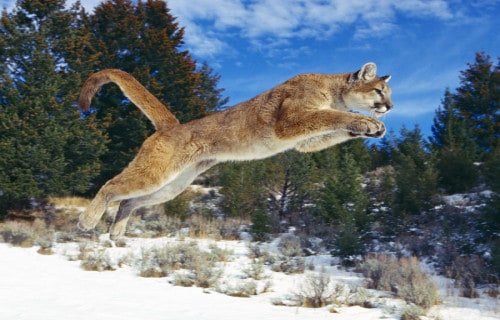
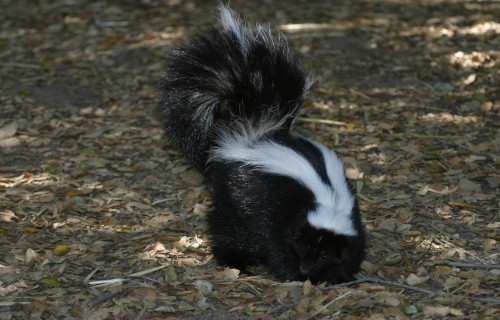
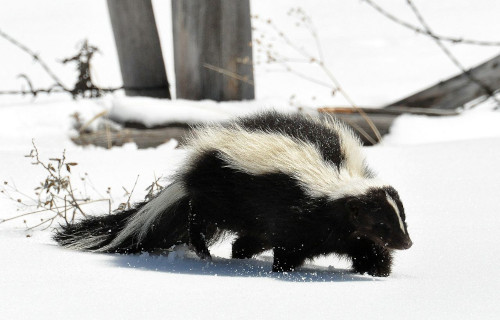
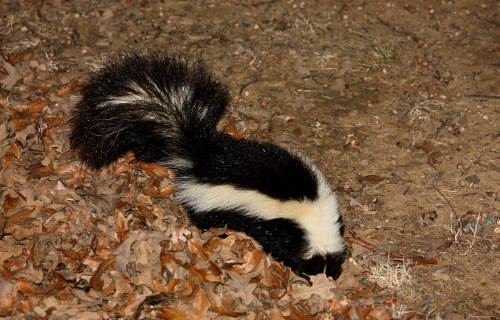
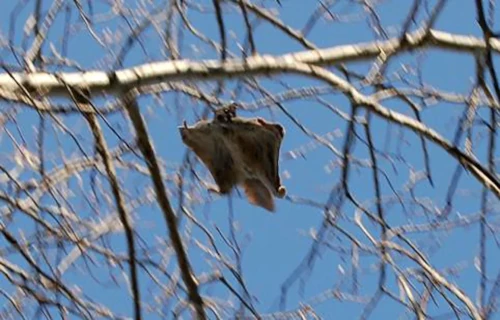
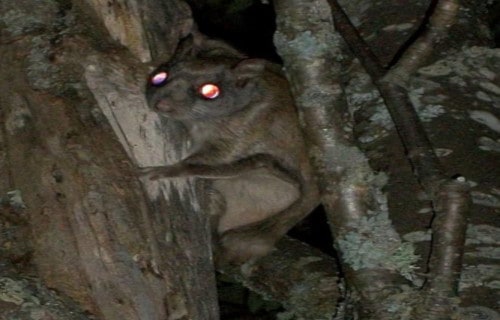
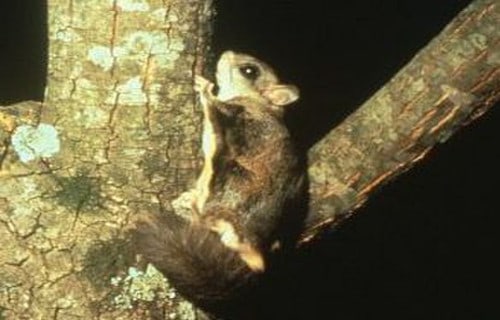
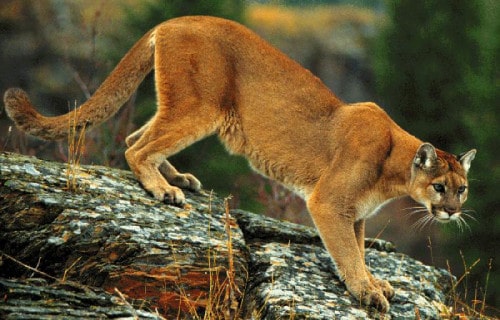
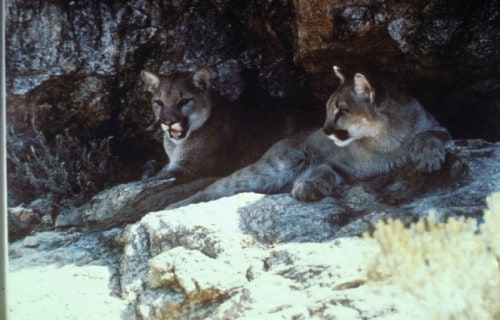
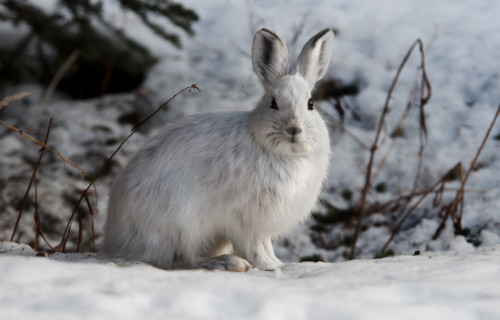
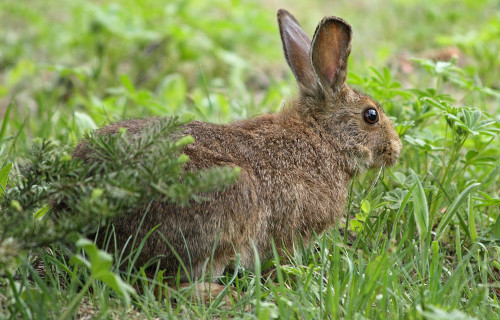
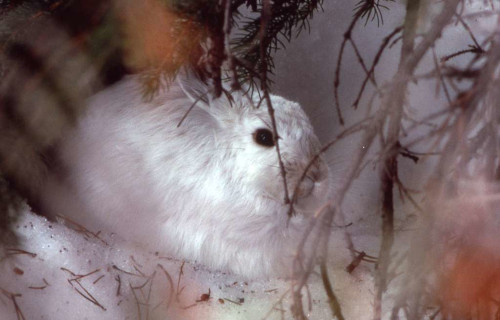
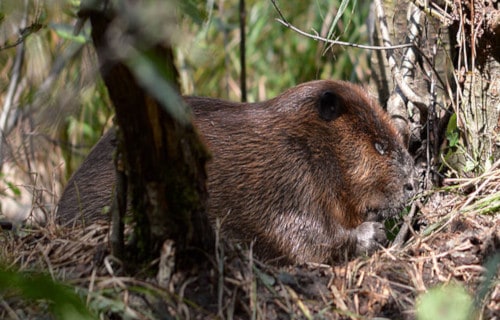
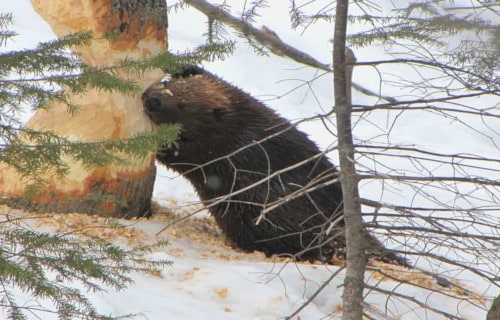
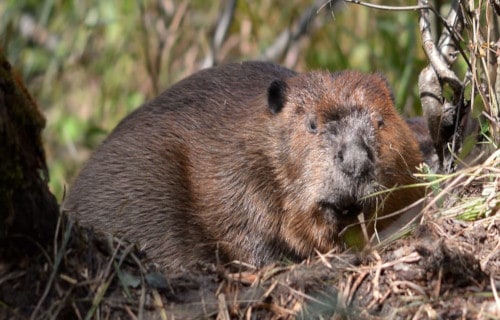









Leave a Reply